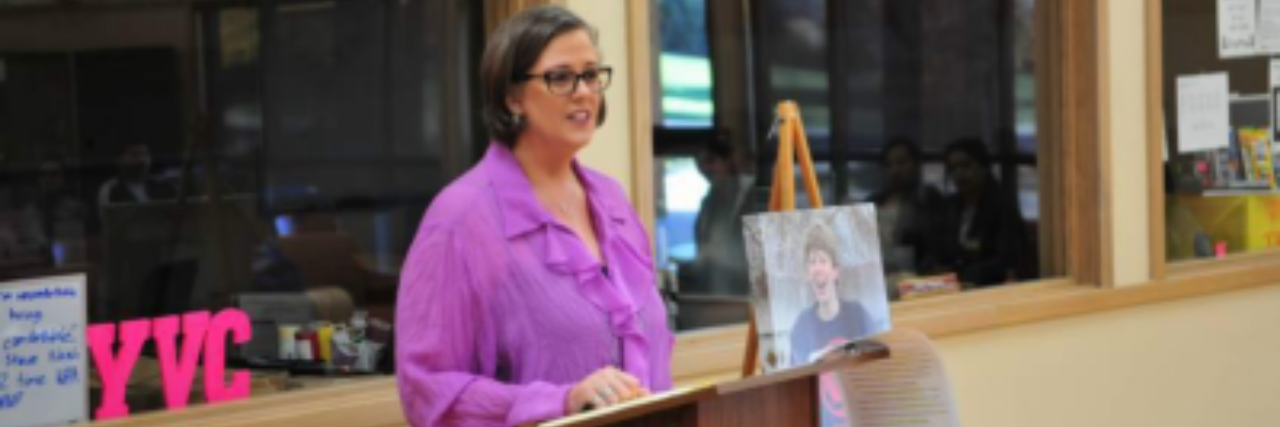How Losing My Son to Suicide Has Caused Lifesaving Ripples of Hope
Editor's Note
If you experience suicidal thoughts or have lost someone to suicide, the following post could be potentially triggering. You can contact the Crisis Text Line by texting “START” to 741741.
Five years ago today, late in the afternoon, we received the call which shattered our lives. Our son, Tom, killed himself. My memories of that day are incomplete due to trauma. I do remember snapshots and short videos of the horror of the day which still have a hold on me, although, through counseling, no longer suffocate me. Within hours, our family made the decision to be transparent about the cause of his death without realizing the significance of our early choice.
Tom’s suicide impacted many people. Our family is forever changed by the overwhelming grief of losing him. His friends speak of the pain of his absence. Our community’s sense of security crumbled, realizing it is not immune to this kind of loss, and the school district found money to provide increased mental health services. People started to speak more openly about mental illness and suicidal ideation. Tom’s passing created a swell of change.
I have few memories of the first year or so after he died. I remember going to work, desperately trying to hold myself together and adjust to life without my son while my students and teaching peers did their best to uplift and support our family. We still hold in our souls the kindness of strangers and friends who reached out with food, flowers, gifts, kind words and prayers. Our community showered us with love and acceptance.
Several months into our grief journey, I started writing and sharing about it through social media. Readers responded in positive and supportive ways which brought us much comfort. We also received feedback my messages were equipping others to help loved ones. In my mind, Tom’s death started to take on a bigger purpose.
Almost a year after he died, I researched suicidal ideation to better understand the beast who told my child lies and eventually stole him from us. I concluded Tom likely experienced undiagnosed depression on top of his untreated anxiety, and I also identified the signs of his suicidal ideation we missed. I wrote a piece sharing this information in hopes it would help others by starting important conversations around the difficult topic. Doing so was terrifying because it felt as though I was admitting I failed as a parent; however, readers were encouraging and thankful.
Over the course of the next few weeks, I felt called to become even better educated around the topic and to start presenting to groups. With my husband, LJ, by my side, I spoke to small gatherings while holding two part-time jobs, confident we were making a difference. Within a few years of that call and on a leap of faith, I left teaching theater to start this work full-time as the market allows. To date, my husband and I have shared with over 1,000 people our messages of prevention and the need to change the way our culture speaks about suicide and mental illness. We hope our choice to accept this call continues to create a flow of information which educates others, reduces stigma and saves lives.
In addition to speaking, I published a book, and I continue to post pieces on suicide loss survivor blog and support pages and other associated web pages like The Mighty. People from around the United States, as well as other countries, have contacted us desiring direction and mentoring on doing similar work, to thank us for helping to reduce stigma and, in some cases, sharing how our work helped save specific lives.
The days after Tom’s death blurred into weeks, months and years. Then, last November, our surviving child called us with news which would once again shake our world — they were experiencing suicidal ideation. Had Tom not died, we would not have been equipped to help in a constructive and loving way. But, because of our knowledge and experience, we knew how to assist them. I have no doubt Tom saved his sibling’s life.
Within weeks of starting counseling, our surviving child shared with us she is a transgender woman. She has chosen to live her truth, and we are embracing this change because we love her deeply and unconditionally. During one of our recent conversations, she shared how grateful she has been for our support, as well as her desire to explore changing careers to work with transgender individuals (who have a higher rate of suicidal ideation than cisgender and other LGBTQIA+ individuals). Had we not known how to support her during her darkest time, she may not be alive to pursue helping others traveling her similar journey. Should she follow that path, her loving assistance could reverberate throughout her community.
From the positive changes in our own town, to the reach of our prevention work and the potential life-changing and affirming work our daughter may pursue, it is apparent the ripples of hope emanating from Tom’s suicide are many. We are able to move through our grief knowing Tom’s spirit lives in each of the lives we touch.
Original photo by author

